
Information & Communication Technology Power Monitoring
We were able to gain access to a number of tablets, netbooks and laptops for power monitoring at a local retailer. From this monitoring and past data, we were able to generate power trend graphs. Our results are below.
Power Trends
In order to understand the way that IT would be used in schools of the future and how it would affect the thermal properties; it was important to take into account the future technology trends. Technology is a rapidly changing area with devices being improved and new technology is being brought into the market daily. Understanding the power consumption of future ICT devices was important for carrying out modelling on the classrooms.
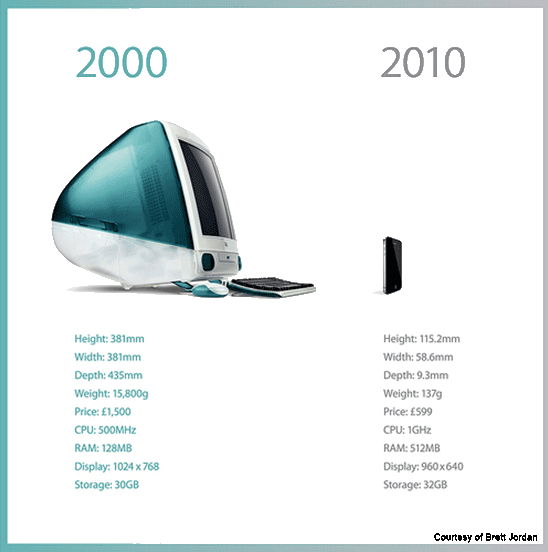
Figure 1: Apple Evolution Over a Decade
Currently, the vast majority of ICT devices available in schools are desktop computers. However, over the last few years there is a growing trend towards mobile devices such as laptops which have become more powerful, cheaper and more available. It was decided that the power trend investigation should be focused on technology that would likely be utilised within future schools; therefore laptops, netbooks and tablet devices were considered. Although desktop computers still have a place today, it was decided that they would not be favoured over more mobile alternatives in the future.
Energy Star Idle Power Trends
There are a number of sources that carry out testing on devices providing power data. Energy Star collects data of all new devices through testing. Through analysis of this data it was possible to create a trend of the future power consumption of a selection of devices that could be used in classrooms.A selection of data was taken for idle power consumption of laptops over the previous 10 years of testing; a scatter graph of the data was created to examine possible trends. What was clear from the graph was that idle power consumption of devices would be decreasing over the next ten years.
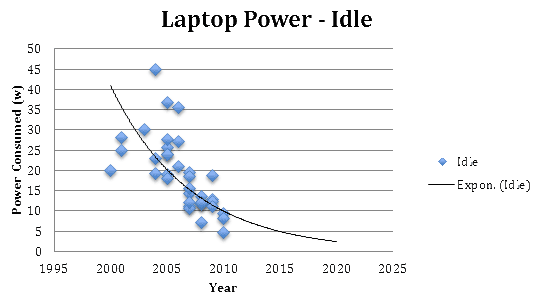
Graph 1: Idle Laptop Power Consumption
A similar analysis was carried out for netbook computers, although data available for these devices was more limited due to the devices only being available for the past 5 years.
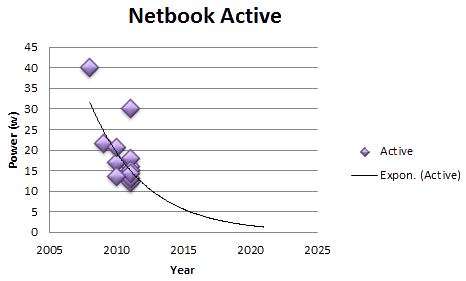
Graph 2: Netbook Monitoring
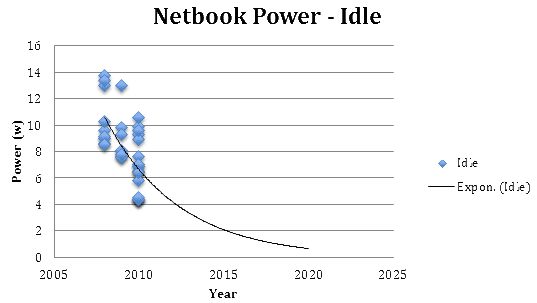
Graph 3: Idle Netbook Power Consumption
This data showed that the idle power consumption of devices was decreasing over time as technology was improved and new technology was implemented. However, in to order to accurately represent the power consumption of the ICT within the classrooms that were to be modelled it was important to find the power consumption while under active use.
Monitored Active Power Trends
Active power testing is not completed by organisations such as Energy Star, to acquire data it was necessary to carry out monitoring. Testing was carried out using a watt meter with available ICT to ascertain the power consumption when active; for example running a video or working on a word processing document. This was carried out for both laptops and netbooks. Tablets that are currently on the market were also monitored to gain an insight into their current power consumption.
Laptops
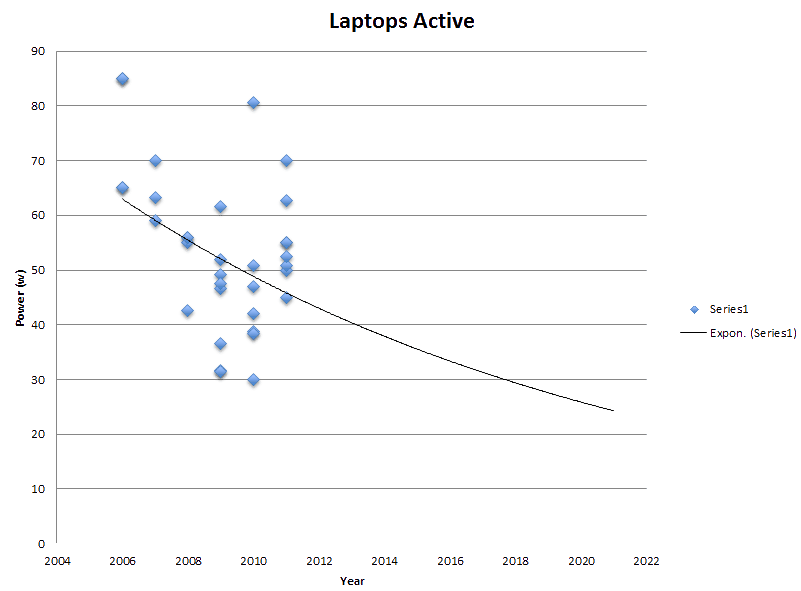
Graph 4: Monitored Active Laptop Power
Monitored data also confirmed that active power would decrease over time. Monitored data highlighted that 10 years into the future laptops would consume around 25 W based on the trend.
Again the predictive trend suggests that by 2020 the active power consumption of a netbook would be around 15 W.
Tablets
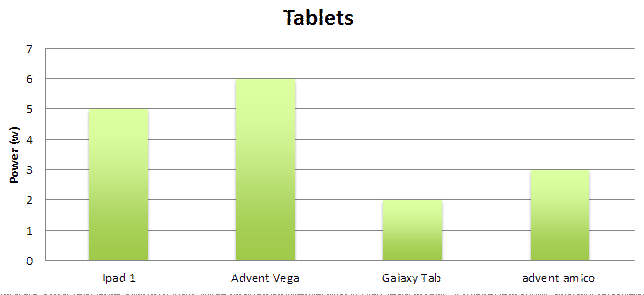
Graph 5: Active Tablet Power Consumption
Power Factor
Through monitoring, we found the power adapters were very inefficient on some devices with very low power factor. Excess reactive power was drawn from the supply and dissipated as heat from the adapter. We assumed all power drawn in our monitoring to be resistive, however in reality the casual gains of the electronic equipment would be higher than modelled. Although schools would not need to pay for apparent power as part of their energy bills, the excess heat generated by the higher reactive power requirement could have an effect on overheating where more ICT has been introduced. This issue is outside the scope of this project, however, it could be an interesting avenue for future research.








